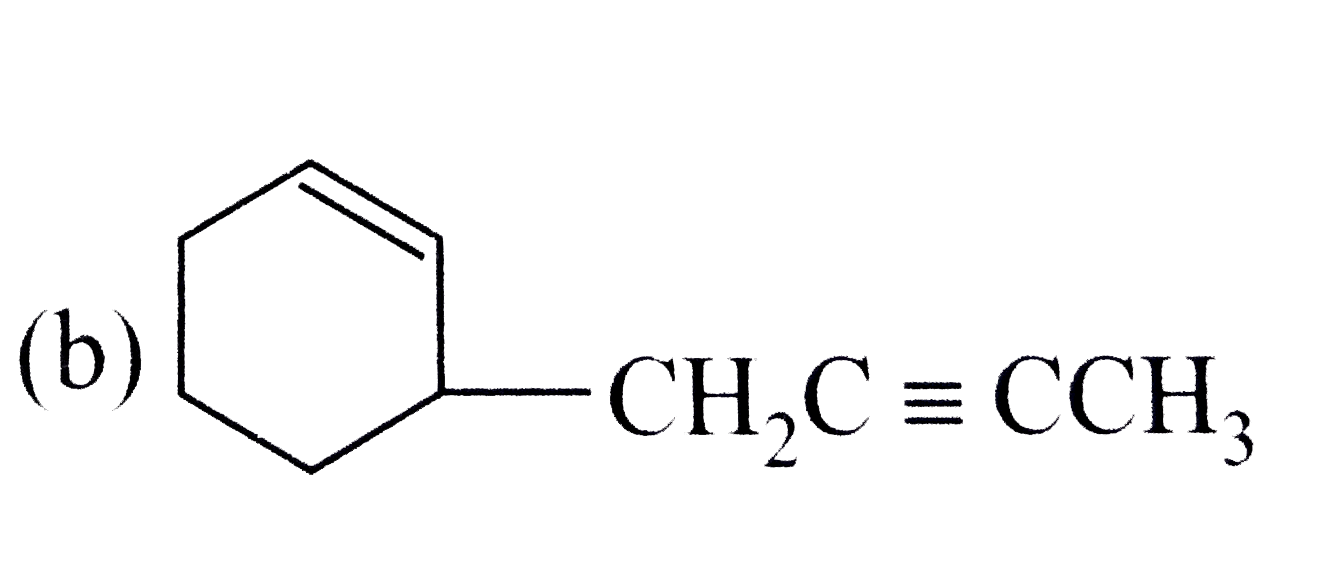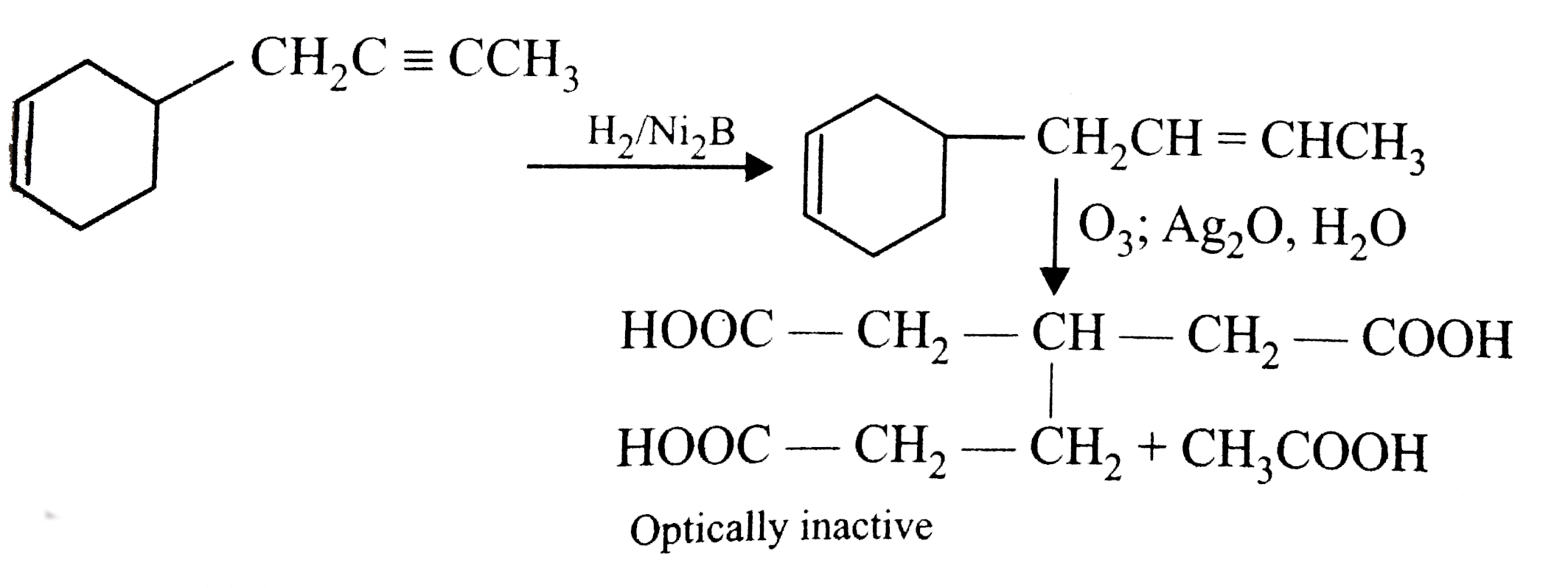Catalytic hydrogenation of compound gives butyl cyclohexane. Treatment of with . When is first reacted with and then oxidatively ozonized, a non resolvable compound is formed. The organic compound is




The correct Answer is:d

gives no ppt. no terminal triple bond but gives ppt. with on treatment of
there is internal triple bond.
In the ring triple bond is not possible.
treatment reduces triple bond to double bond. Now possible options are and .
Oxidative ozonolysis gives non resolvable compound. So only is possible.

Topper's Solved these Questions
- HYDROCARBONSBook:A2ZChapter:HYDROCARBONSExercise:Benzene
Explore 23 Videos
- HYDROCARBONSBook:A2ZChapter:HYDROCARBONSExercise:Section B - Assertion Reasoning
Explore 27 Videos
- HYDROCARBONSBook:A2ZChapter:HYDROCARBONSExercise:Methods Of Preparation Of Alkanes
Explore 31 Videos
- ENVIRONMENTAL CHEMISTRYBook:A2ZChapter:ENVIRONMENTAL CHEMISTRYExercise:Section D - Chapter End Test
Explore 30 Videos
- HYDROGENBook:A2ZChapter:HYDROGENExercise:Section D - Chapter End Test
Explore 30 Videos
Similar Questions
Knowledge Check
The compound X(C3H6O) on oxidation gives a compound Y(C3H6O2) . The compound Y is
Apropanoic acidBbutyric acidCacetic acidDpropenoic acidCompound A is reacted with C2H5-X gives B . The compound B is reduced by di-isobutyl aluminium hydride gives butanal. The compound A is
A B
B C
C D
D
An organic compound X(C4H8O2) gives positive test with NaOH and phenopthalein. Structure of X will be :
ACH3−CH2−CH2−C∣∣O−OHBCH3−C∣∣O−C∣∣O−CH3CCH3−C∣∣O−O−C2H5DCH3−C∣∣O−OCH3
A linear chain compound 'A' (C5H10O2) gives brisk effervescence of CO2 when treated with saturated aqueous NaHCO3 solution. It reacts with chlorine gas in the presence of catalytic amount of red phosphorous to give compound 'B' . Identify compound 'A' and 'B' . Identify the chiral isomer of compound 'A'/
View SolutionA compound 'X' on treatment with Br2/NaOH, provided C3H9N, which gives positive cabylamine test. Compound 'X' is :
View SolutionA Compound X with molecular C3H8O on oxidation gives compound Y with molecular form C2H4O2. The compound X will be
View SolutionAn organic compound 'X' on treatment with acidified K2Cr2O7 gives a compound 'Y' which reacts with I2 and sodium carbonate to form Tridomethane. The compound 'X' is
View SolutionMg2C3+H2O→ X (organic compound). Compound X is-
View Solution

